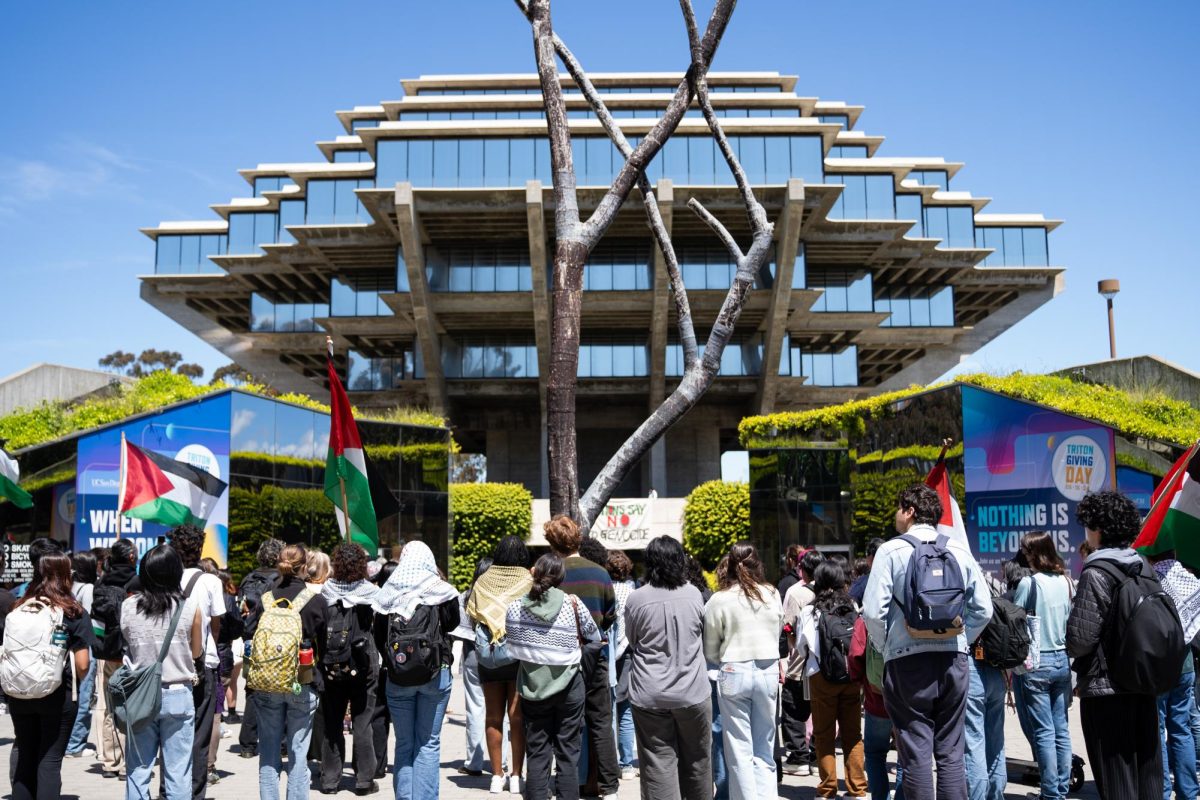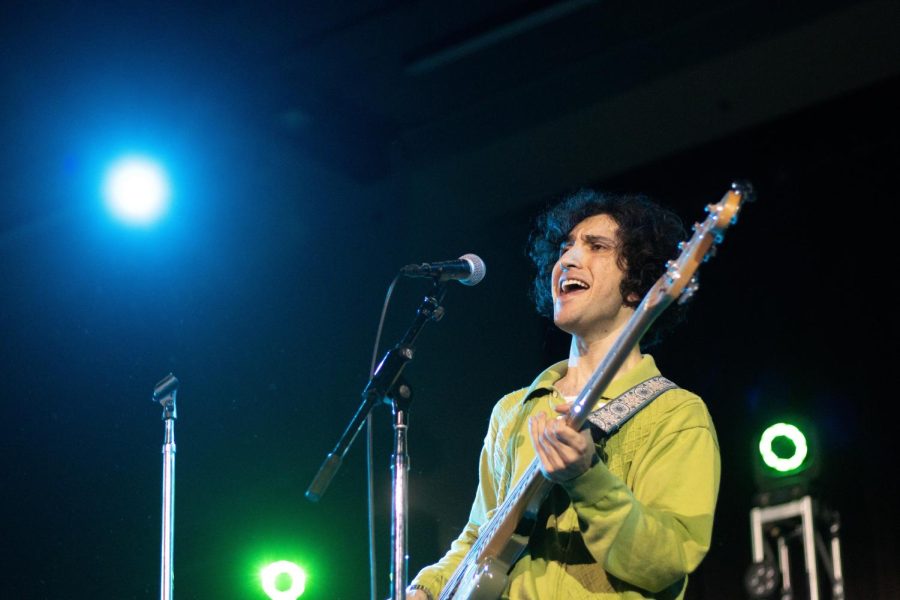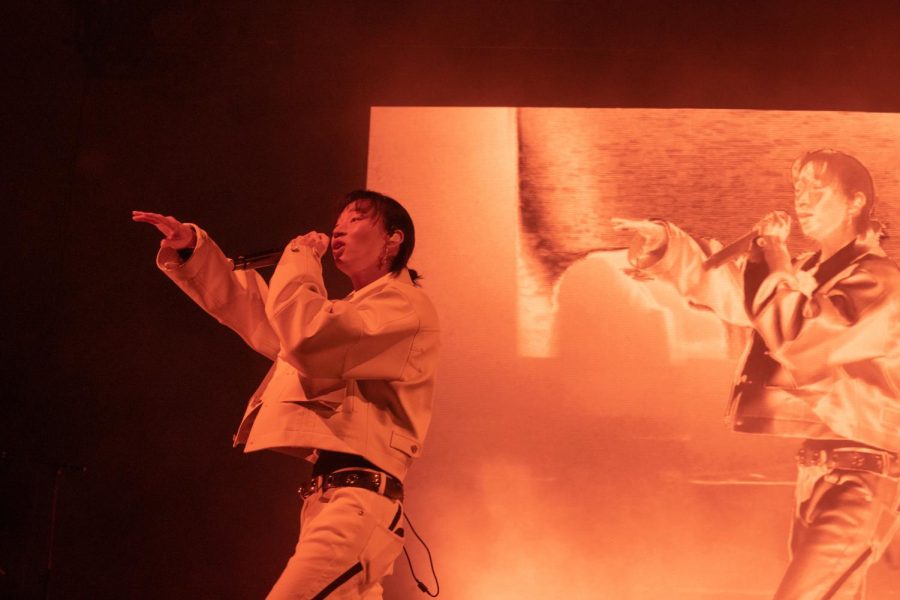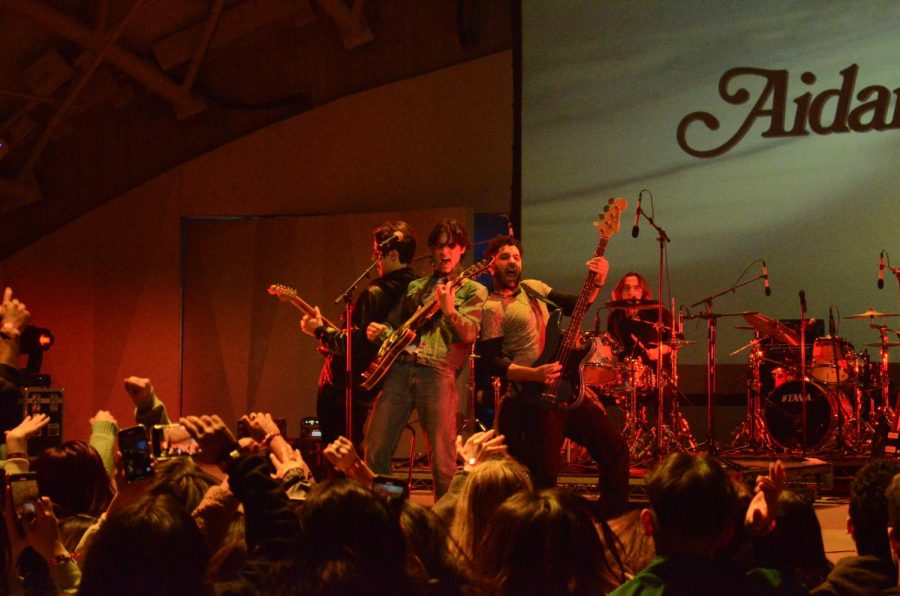Everyone who walked through Eleanor Roosevelt College on the afternoon of April 14 was subject to interruption by Step It Up! 2007. Minutes before the event was scheduled to begin, members of the organization began yelling for students to “”Step it up!”” encouraging them that, “”It’s hot to care about global warming.””
Eleanor Roosevelt College freshman Brianna Martin passes out fliers in front of a Roosevelt lounge. The students in the background write letters to Congress, asking for legislation that will require carbon emissions to be cut by 80 percent by 2050.
“”We expected a lot of people to show up,”” Sixth College sophomore Michelle Kizner said. “”Many of the people who were supposed to show up didn’t come because of the Relay for Life event. I was at Relay for Life, and I told people to come, but I know the time conflict was an issue.””
Step It Up was almost lost amid the Admit Day activities, Relay for Life and the Thurgood Marshall College Cultural Celebration, which were all hosted on the same day. But despite the conflicts, over 40 UCSD students and activists from around San Diego participated in the program, which encourages Congress to pass legislation that would lower carbon emissions by 80 percent by 2050.
Roosevelt freshman Carol Southworth brought the UCSD organization to life. Southworth and other students planned out a day of awareness and activities to inform students on campus about the adverse effects global warming has had and will continue to have on the planet.
The Step It Up team made 10 posters prior to the event that featured quotes and demands to Congress, including Mahatma Gandhi’s quote, “”You must be the change you wish to see in the world”” and a quote from the Intergovernmental Panel of Climate Change: “”Warming of the climate system is unequivocal.””
“”[Global warming] is a big issue and more people need to be aware of it,”” Roosevelt freshman Brianna Martin said. “”It would be an amazing achievement if this legislation that we are supporting would be passed. It would be a huge step.””
At 1 p.m., participants gathered on the main college lawn to hang the posters and take pictures of them. They then wrote letters to Congress pleading that the senators and representatives support the proposed legislation. Those letters were collected by Southworth to be sent to San Diego officials later in the week.
“”A big part of the event was taking pictures with the banners that we made that asked Congress to pass legislation,”” Southworth said in an e-mail. “”We are determined to make some noise about this.””
After the first hour of events, participants were brought to the Copley International Conference Center at the Institute of the Americas. There, Nigella Hillgarth, Executive Director of the Birch Aquarium, spoke about the science behind global warming.
“”We have to move one step at a time to raise awareness about climate change,”” Hillgarth said.
Hillgarth oversees the production of a climate-change exhibit, which will open on May 15 at the Birch Aquarium. She has worked with over 100 climate researchers at the Scripps Institution of Oceanography to get a better idea of the real science behind global warming. She now travels to schools and institutes to discuss the scientific aspect of global warming and climate change and to promote the opening of the exhibit.
She explained that the movement for global warming awareness and studies actually started in San Diego; Roger Revelle appointed Charles Keeling, an early pioneer in carbon dioxide measurement, to work at Scripps. Keeler then began a record of carbon dioxide emissions at the site of Mauna Loa, Hawaii.
Keeling expected to see a steady level of carbon dioxide emissions throughout the years with only seasonal differences, but instead, he found that there was a significant increase from year to year. From this research, he created the Keeling curve, which shows the constant increase in carbon emissions from 1960 to 2004. This initial research began the global warming research phenomena.
Hillgarth continued the research by linking the most severe temperature rise and carbon dioxide emissions to the past few decades.
“”The 10 hottest years in recorded history have happened in the last 14 years,”” Hillgarth said. “”June 2006 was the hottest month ever. And the largest growth rate of carbon dioxide emissions has been in the last decade. Scientists believe that if we continue energy use at our current rate, the carbon dioxide emissions will increase by 50 percent in 40 years.””
Hillgarth quoted the IPCC report released on Feb. 2, which stated, “”Warming of the climate system is unequivocal, as is now evident from observations of increases in global average air and ocean temperatures, widespread melting of snow and ocean and rising average sea level.””
Questions from students addressed what kind of effects the world would experience if emissions were stopped. Hillgarth answered by encouraging the immediate reduction of carbon dioxide emissions.
“”It would take 300 to 400 years for the temperature increase to stop and stabilize if all emissions stopped now, but scientists are confident that if we stop, then life will be able to be maintained,”” she said.







